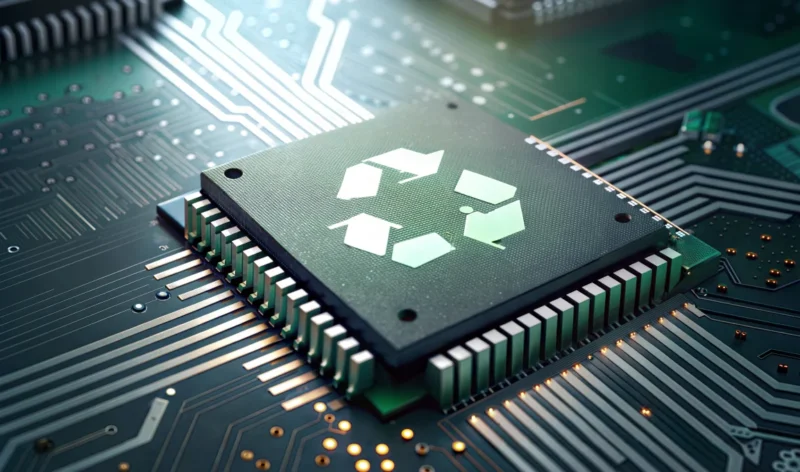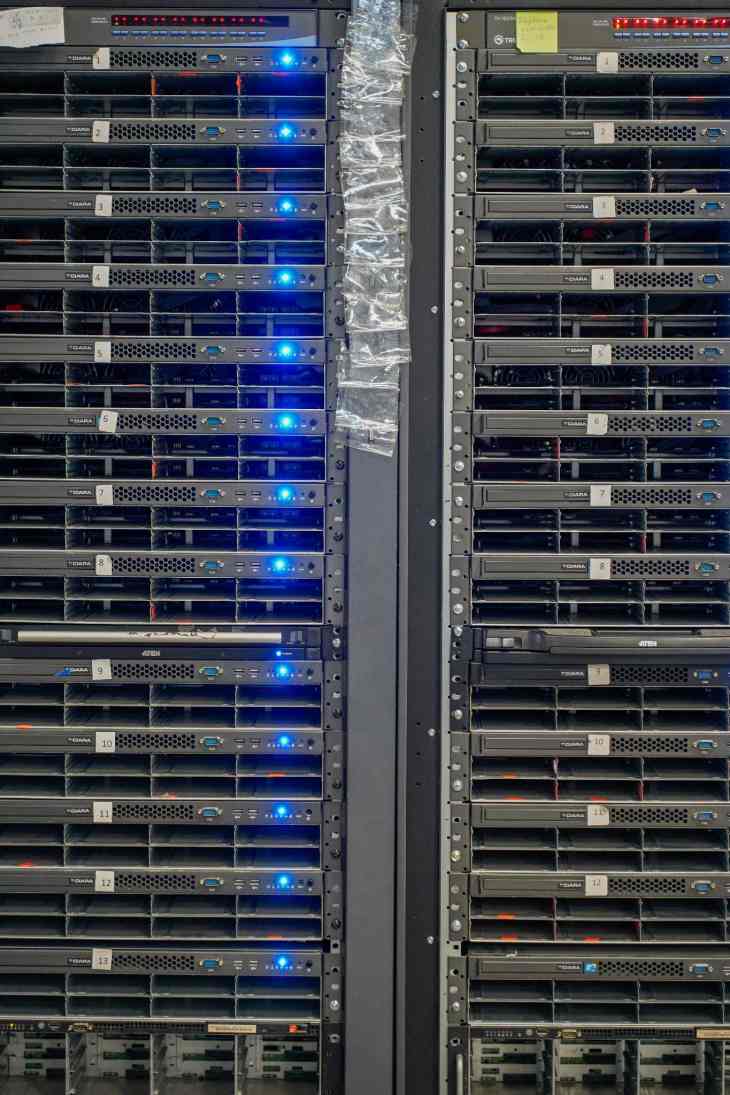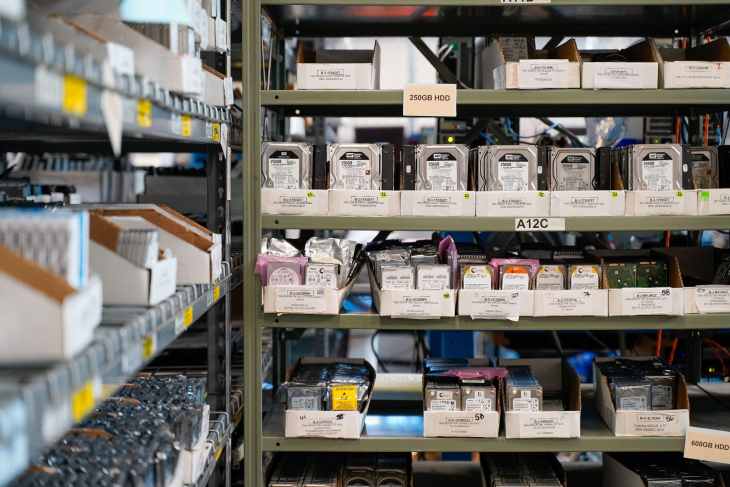Why Recycling IT Equipment is Critical for Your Business and the Environment

According to the UN Global Waste Monitor, electronic waste (e-waste) is growing five times faster than the rate of recycling. The world produced 82% more e-waste in 2022 than it did in 2010, and the pace is accelerating. By 2030, the UN estimates that figure will grow by another 33%.
The status quo simply isn’t sustainable. Technology is evolving at a faster pace than ever. Businesses continuously upgrade their IT infrastructure, often leaving them with outdated equipment. While upgrading to the latest devices can enhance productivity, the environmental and operational impacts of improperly disposing of old IT gear are significant.
For businesses, responsible recycling of unwanted IT equipment has now become imperative. Whether you’re upgrading old servers, disposing of outdated laptops, or decommissioning entire data centers, proper IT recycling can minimize environmental impact while benefiting your business. This article delves into the environmental and business advantages of recycling IT assets, highlighting how the recycling practice supports sustainability, enhances data security, and ensures compliance for companies committed to responsible operations.
The Environmental Impact of IT Waste
When organizations and individuals fail to properly dispose of IT equipment like servers, computers, and smartphones, these items often end up in landfills, where they can contaminate soil and water. Without proper containment, toxic chemicals such as lead, mercury, and cadmium can pose severe health risks to both wildlife and humans.
In some cases, unethical companies export old IT equipment to developing nations, creating massive e-waste piles that pose serious health risks to entire communities. This practice is both irresponsible and unsustainable.
Proper recycling of IT equipment prevents those hazards from ever emerging by diverting e-waste from landfills and ensuring that hazardous materials are handled safely. It systematically recaptures valuable resources like metals and plastics to be reused in new products. In doing so, it reduces the need to extract virgin raw materials from the earth, conserving energy and reducing the carbon footprint associated with manufacturing new equipment.

Business Benefits of Recycling IT Gear
Recycling IT equipment is not just about environmental benefits it’s also a good business decision. Many organizations are unaware that their decommissioned IT equipment may have substantial residual value. By partnering with a reputable IT asset disposition (ITAD) company, your business can recover that value, offsetting the cost of newer replacement equipment.
By promptly and properly recycling unwanted IT assets, companies can also reduce storage costs, avoid the potential penalties for failure to comply with environmental regulations and mitigate data security risks. Embracing IT recycling enables businesses to advance their corporate sustainability goals, satisfying both internal demands for green practices and external pressures from customers, regulators, and other stakeholders. By integrating recycling into corporate operations, companies can enhance their sustainability profile and bolster their corporate social responsibility (CSR) efforts.
How Recycling IT Equipment Protects Data and Ensures Compliance
While the environmental and business benefits of IT recycling may seem obvious, data security is another critically important factor to consider. Retired IT assets often contain sensitive data such as customer records, confidential employee files, and trade secrets. In some cases, you may not even be aware that a device retains data. Many printers and copiers, for example, store data on embedded hard drives or solid-state media.
That closet full of old laptops might not seem like a likely target for overseas hackers, but if just one of those devices ends up in the hands of an employee or contractor working at your offices, the data it contains could end up exposing your company to fines, legal expenses, and bad publicity.
Reputable ITAD companies securely erase data as part of a standard course of operations. The best ITAD providers offer multiple data destruction options, including secure erasure (also known as “data wiping”), hard-drive shredding, or degaussing.
Choose a certified ITAD provider that adheres to strict data protection standards, ensuring compliance with regulations such as GDPR and HIPAA. Certified recyclers can provide a certificate of destruction (COD) to prove the process has been completed successfully. They also undergo routine audits that attest to the thoroughness and consistency of their practices.
IT Asset Recycling and the Circular Economy
Recycling IT equipment is a vital element of the emerging circular economy, a system that promotes the reuse and repurposing of materials to minimize waste and the consumption of new raw materials. By recycling IT assets, businesses can help close the loop, ensuring that materials such as metals, plastics, and rare earth elements are reintroduced into the manufacturing cycle rather than discarded in landfills where they can pollute the environment.
The circular economy reduces the demand for virgin raw materials. That conserves natural resources and lowers the environmental impact of producing new IT equipment. By aligning their business processes with the principles of the circular economy, organizations can also enhance their leadership position in responsible, sustainable practices. That holds substantial appeal for customers and investors demanding that companies support environmental stewardship.

Steps for Implementing an IT Recycling Program
If your business is ready to embrace IT recycling, the next step is to develop an actionable plan that aligns with your organization’s strategic goals. Here are a few steps to get started:
- Partner with a certified ITAD provider: Choose an IT recycling company that meets industry standards for secure data destruction, environmental compliance, and value recovery. Pay particular attention to certifications such as e-Stewards, which is widely recognized for its rigorous environmental standards.
- Secure data destruction: Assess your organization’s options for data destruction and work with a reputable ITAD provider to establish protocols for wiping, degaussing, or shredding hard drives and other media. Work with your company’s risk and compliance leaders to assure that the methods and processes align with your organization’s specific needs.
- Establish clear recycling policies: Make recycling part of your company’s broader sustainability initiatives by setting measurable goals for reducing e-waste and recovering value from IT assets.
- Track and Measure Impact: Use sustainability metrics to track the progress of your recycling efforts, helping to demonstrate your company’s commitment to reducing its environmental footprint. The best ITAD companies can provide you with reports to help quantify the impact of your IT recycling efforts.
Conclusion
Recycling IT equipment is a win-win activity that benefits your business while contributing to a cleaner, safer environment. By reducing e-waste, recovering value, securing data, and aligning with the circular economy, companies can strengthen their sustainability efforts and position themselves as responsible corporate citizens. Ready to start your IT recycling journey? Learn how NCS Global can help your business recycle IT assets responsibly and recover value today.